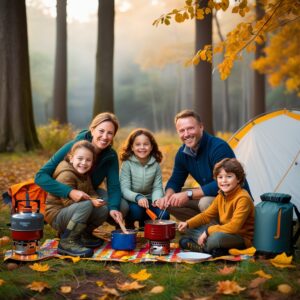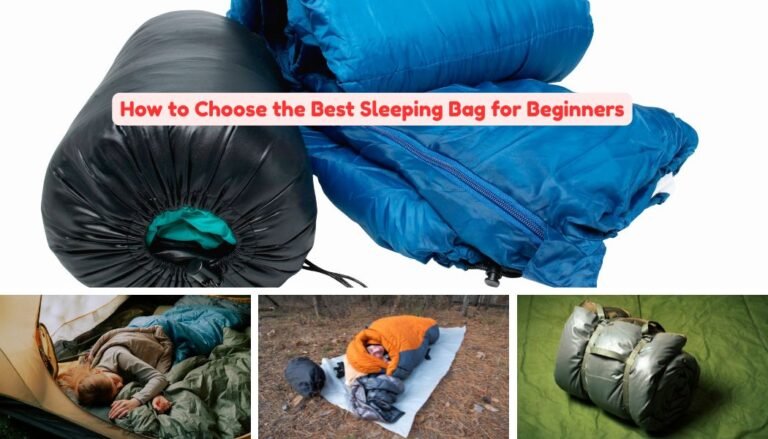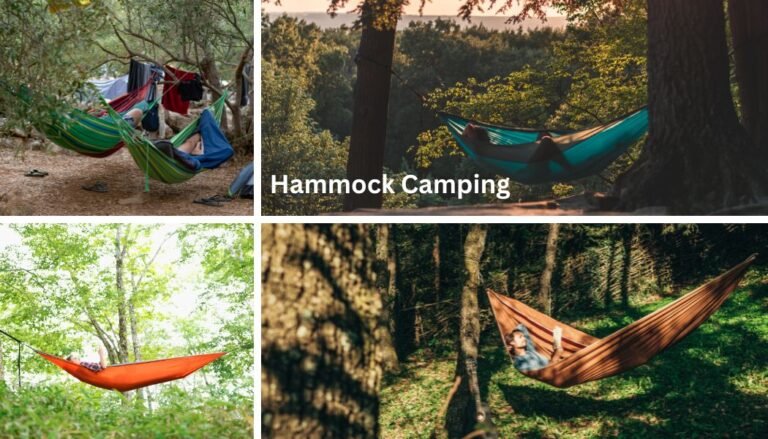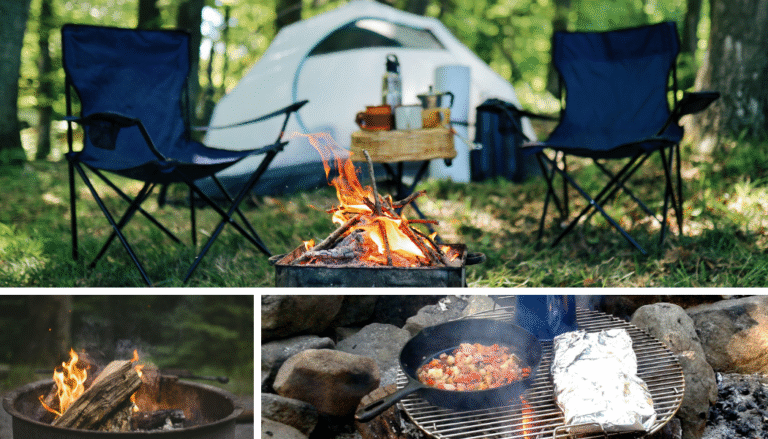Why Fall is the Best Time to Camp with Kids
How to camp in the fall with kids: Fall is a great season to embark on a camping adventure with your kids. The crisp air, colorful changing leaves, and absence of summer’s scorching heat create an inviting environment for families to explore the great outdoors. One of the best things about fall camping is that it’s less crowded, giving you and your family a more intimate experience with nature. Not to mention, the lower temperatures make outdoor activities far more comfortable for children. You get to escape into serene, scenic locations and truly connect with your surroundings.
However, camping with kids during fall requires careful preparation. Unlike the summer months, fall brings unpredictable weather and cooler temperatures, which means having the right gear and planning in place is crucial. But when you get it right, fall camping with your kids becomes an experience that builds strong memories. In this guide, I’ll walk you through everything you need to know about making your fall camping trip a success—from selecting the best campsite to keeping your kids entertained, warm, and safe.
Preparing for the Adventure: Planning and Safety First
Camping in the fall with kids requires diligent planning. Unlike spontaneous summer trips, fall camping involves preparing for rapidly changing weather conditions, shorter days, and colder nights. Your first step is to choose a camping location that’s close to your home in case you need to return quickly due to bad weather or unexpected situations.
In terms of safety, it’s essential to have a reliable weather forecast app on hand. Fall weather can shift from warm to freezing within hours, so monitoring the forecast on a regular basis is a must. Furthermore, consider the terrain of the campsite you’re visiting. Slippery leaves, muddy trails, and potential wildlife activity may pose risks that kids aren’t accustomed to. Packing a well-stocked first-aid kit with fall-specific needs (think extra layers, hand warmers, etc.) is non-negotiable.
Finally, having a solid plan in place for emergencies, such as a sudden cold snap, is crucial. Share your trip itinerary with a close friend or family member, and make sure your phone’s battery is fully charged before heading out. In rural areas, bringing a portable battery pack can be a lifesaver.
Choosing the Right Campsite: Family-Friendly Locations
Choosing the right campsite is essential when camping in the fall with kids. Opt for a location that offers family-friendly amenities such as flat terrain, restrooms, and access to water. State and national parks often have well-maintained sites that cater to families, with safe walking trails, nature education centers, and ranger programs designed to teach kids about the environment.
Accessibility is also important. While adventurous hikes may sound appealing to some, kids may tire easily or be less excited about rough trails. Select a campsite that allows easy access to your car and the campsite, making it less stressful to manage gear, food, and tired little ones.
Campsites that feature natural wonders, like lakes or waterfalls, can add an extra layer of excitement to the trip. Just be sure to research the safety features of the site, such as fenced-off areas, so kids can explore without wandering too far.

Fall Camping Gear: Keeping Your Kids Warm and Dry
Fall camping gear for kids is all about layering and insulation. The right gear is the difference between a miserable trip and a fun, cozy adventure. First on the list is a high-quality tent. Look for a tent that offers good ventilation during the day and warmth retention during chilly nights. Make sure it’s waterproof because rain showers are more common in the fall, and nothing ruins a camping trip faster than a wet interior.
Sleeping bags should be rated for at least 20°F lower than the lowest expected temperature during your trip. Kids get cold more easily than adults, so a sleeping bag with thermal insulation is a must. Don’t forget to pack sleeping pads or inflatable mattresses, these provide extra warmth by creating a barrier between the cold ground and your child.
Other critical gear includes waterproof footwear, thermal underlayers, and mittens. Hand warmers can be lifesavers, especially on chilly mornings and evenings. You’ll also want to invest in a rain cover for your tent and tarps for outdoor play areas. A small, portable heater can be useful, but check the campsite rules before bringing one.
Essential Clothing for Kids in Fall Camping
The clothing your kids wear during a fall camping trip is arguably the most important factor in keeping them comfortable. Dress them in layers so they can easily adjust as the weather changes throughout the day. Start with moisture-wicking base layers that keep sweat away from their skin, followed by insulating layers such as fleece or wool.
Outer layers should be waterproof and windproof, ensuring that they stay dry in the event of rain or damp conditions. Avoid cotton (remember the old adage, cotton kills) as it holds moisture, which can quickly lead to a child feeling cold and uncomfortable. Insulated hats, gloves, and scarves are essential, as kids tend to lose heat from their extremities quickly.
Don’t forget about socks and footwear! Wool or synthetic socks are best for retaining warmth, and waterproof boots will keep their feet dry when walking through wet grass or muddy trails. Always pack extra socks and gloves, as these items tend to get wet or dirty faster than expected.
Kid-Friendly Activities: Making Camping Fun and Educational
To make your fall camping trip memorable, plan several activities that engage your kids with the natural environment. Scavenger hunts are a great way to teach kids about the various plants, animals, and insects that thrive in the fall. Create a list of items they need to find, such as pinecones, specific leaves, or animal tracks—and offer small rewards for completing the hunt.
Nature crafts are another fun option. Bring along supplies to make leaf rubbings, pinecone bird feeders, or painted rocks. Not only does this give your kids something creative to do, but it also helps them connect with the environment in a hands-on way.
Stargazing is an activity that kids often love, especially since the early darkness of fall makes it easy to do before bedtime. Bring a simple star map or download a stargazing app to help identify constellations. This can also be an opportunity to teach kids about space and the night sky.
Cooking and Meal Planning: Tasty, Warm Meals for Chilly Days
When it comes to fall camping, meal planning takes on added importance. The cooler weather means your kids will burn more calories, so you’ll want to prepare hearty, warm meals that are easy to make. One-pot dishes like stews, soups, and chili are ideal for fall camping because they’re simple to prepare and provide warmth.
Cooking over an open fire is fun, but be sure to bring along a portable camp stove in case the firewood is damp, or you’re camping in an area with fire restrictions. Hot chocolate, cider, and warm oatmeal make for great breakfast options, while lunches can consist of sandwiches or wraps with hot soup. You can make campfire desserts in the evening.
Pre-cooking some meals at home and storing them in thermal containers is a great way to save time and reduce stress on the first day at the campsite. Don’t forget to bring plenty of snacks like granola bars, trail mix, and fruit to help keep your kids energized throughout the day.

Keeping Kids Comfortable: Tents, Sleeping Bags, and More
The key to a successful fall camping trip with kids is keeping them comfortable. As mentioned, a well-insulated tent is crucial, but there’s more to consider. Make sure to bring pillows from home or invest in camping pillows to ensure your kids sleep soundly. Also, for younger children consider bringing their favorite blanket or stuffed animal for comfort.
Using a tent heater is one option, but safety should always come first. Always read the manufacturer’s instructions and ensure proper ventilation if you plan to use one inside your tent and you have a portable CO detector. Instead of heaters, you can opt for hot water bottles placed inside sleeping bags before bedtime to preheat their sleeping bag.
During the day, setting up a cozy outdoor area with foldable chairs, warm blankets, and a tarp overhead can create a comfortable space for lounging and playing.
Safety Tips: Staying Safe in the Changing Fall Environment
Safety should always be top of mind when camping with kids, and the fall season presents its own set of challenges. The earlier sunsets mean you’ll need to have plenty of light sources, including headlamps, lanterns, and extra batteries. Reflective clothing or glow sticks are a good idea for evening walks or bathroom trips.
In terms of wildlife, fall is a more active season for animals preparing for winter, so teaching your kids to maintain a safe distance from any creatures they encounter is essential. Make sure they understand the importance of not leaving food out, as this can attract unwanted wildlife to your campsite.
Additionally, it’s important to keep an eye on the weather. Fall storms can arrive suddenly, and temperatures can drop significantly at night. Keep extra layers handy, and always have a backup plan in case the weather turns severe.

Environmental Awareness: Teaching Kids to Respect Nature
Camping is a perfect opportunity to teach your kids about environmental stewardship. Encourage your children to practice “Leave No Trace” principles by cleaning up after themselves and not disturbing the wildlife. Teaching them about the importance of keeping nature clean fosters a sense of responsibility towards the environment.
Additionally, you can involve them in small activities like picking up litter and tidying up around the campsite. This helps them understand their role in preserving the beauty of nature for future generations.
Packing Up: Leaving No Trace Behind
As your camping trip comes to an end, it’s crucial to leave your campsite exactly as you found it. Teach your kids to pick up all trash, pack away leftover food, and dismantle any temporary structures, like tarps or makeshift clotheslines. This instills a sense of responsibility and respect for nature that will stick with them long after the trip ends.
Double-check the area for any items you might have left behind, especially smaller things like utensils or toys. It’s also helpful to involve your kids in this process to make them feel like they’re contributing to the preservation of the environment. Remember to make sure your campfire is completely out.
Creating Lasting Memories Through Fall Camping
Camping in the fall with kids is an adventure full of discovery, bonding, and fun. By planning ahead, equipping yourself with the right gear, and keeping safety and comfort in mind, you can ensure that your family enjoys the experience to the fullest. The sights, sounds, and smells of fall will create memories that your children will cherish for years to come.
FAQ Section
What is the best way to keep kids warm while camping in the fall?
Layering is key. Dress kids in moisture-wicking base layers, followed by insulating layers like fleece, and finish with waterproof outerwear. Using thermal sleeping bags and placing hot water bottles inside them before bedtime also helps keep them warm at night.
Are there any specific safety concerns for camping with kids in the fall?
Yes. Fall brings shorter daylight hours and unpredictable weather. Ensure your campsite is well-lit at night with headlamps or lanterns, and always keep an eye on the weather forecast to prepare for potential storms or temperature drops.
How can I make camping in the fall fun for kids?
Engage them with nature-based activities like scavenger hunts, nature crafts, and stargazing. Prepare warm, hearty meals they’ll enjoy, and encourage them to explore the environment through fun and educational games.
What should I look for in a family-friendly fall campsite?
Choose campsites with amenities like clean restrooms, accessible water sources, and flat terrain. Opt for sites that have kid-friendly activities like safe hiking trails or nearby attractions like lakes or waterfalls.
Disclaimer: This blog post contains affiliate links




